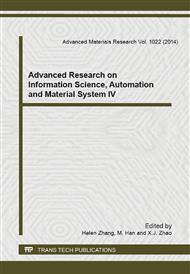[1]
He Jiali, Song Congju: Principle of Power system relay protection (China Electric Power Press, Beijing 2001).
Google Scholar
[2]
DONG Xin-zhou, BI Jian-guang: Analysis on transient traveling wave and study on fault line selection for distribution lines. Proceedings of the CSEE. Vol. 25(4) (2005), pp.1-6.
Google Scholar
[3]
Bi Jianguang, Dong Xinzhou, Zhou Shuangxi: Fault line selection based on two-phase current travelling waves. Automation of Electric Power Systems. Vol. 29(3) (2005), pp.17-20.
Google Scholar
[4]
Shu Hongchun, Dong Jun, Si Dajun, et al: Research on Detecting Fault Traveling Wave and Selecting Fault Line and Fault Phase Based on Wavelet Theory. Yunnan Water Power, Vol. 18(2) (2002), pp.6-9.
Google Scholar
[5]
Su Qianli, Dong Xinzhou, Shi Shenxing et al: A new principle of fault line selection for distribution. Proceedings of International Conference on 7Th Developments in Power System and Protection. Netherlands, IEE, (2001), pp.379-382.
DOI: 10.1049/cp:20010179
Google Scholar
[6]
Dong Xinzhou, Bi Jianguang, Bo Zhiqian: Technique of fault line selection for non-directed ground neutral system. Proceedings of 37th UPEC UK. (2002), pp.193-196.
DOI: 10.1109/icpst.2002.1047582
Google Scholar
[7]
BI Jianguang, Dong Xinzhou, Zhou Shuangxi: A new method to select fault line for distribution system. Proceedings of International Conference on Advanced Power System Automation and Protection. Korea (2004), pp.101-105.
DOI: 10.1109/icpst.2002.1047582
Google Scholar
[8]
Vassilios Chatzis, Ioannis Pitas: A Generalized Fuzzy Mathematical Morphology and Its Application in Robust 2-D and 3-D Object Representation. IEEE Transactions on Image Processing. Vol. 10 (2000), pp.1798-1810.
DOI: 10.1109/83.869190
Google Scholar
[9]
Q.H. Wu, D.J. Zhang: Morphological filtering techniques and applications in protection relaying. Automation of Electric Power Systems. Vol. 27(7) (2003), pp.45-49.
Google Scholar
[10]
Zhang D J, Wu Q H, et al: Accurate fault location based on transients extraction using mathematical morphology. IEE, Vol. 38(24) (2002), pp.1583-1585.
DOI: 10.1049/el:20020989
Google Scholar
[11]
J. Serra: Image analysis and mathematical morphology (Academic press, London 1982).
Google Scholar
[12]
Lin Xiangning, Liu Pei, Gao Yan: Ultra-high-speed line directional protection based on transient and mathematical morphology. Proceedings of the CSEE. Vol. 25(4) (2005), pp.13-18.
Google Scholar
[13]
Wu Q H, Zhang J F, Zhang D J: Ultra-high-speed directional protection of transmission lines using mathematical morphology. IEEE trans on power delivery. Vol. 18(4) (2003), pp.1127-1133.
DOI: 10.1109/tpwrd.2003.817513
Google Scholar


